
Middlesex County is a county located in the north-central part of the U.S. state of New Jersey, extending inland from the Raritan Valley region to the northern portion of the Jersey Shore. As of the 2020 United States census, the county was the state's third-most populous county with a population of 863,162, its highest decennial count ever and an increase of 53,304 (+6.6%) from the 2010 census count of 809,858, which in turn reflected an increase of 59,696 (8.0%) from the 750,162 counted in the 2000 census. Middlesex is part of the New York metropolitan area. Many communities within the county serve as commuter towns to and from New York City and other points north. The county is part of the Central Jersey region of the state.

Milltown is a borough in Middlesex County, in the U.S. state of New Jersey. The borough is nestled within the heart of the Raritan Valley region, with Lawrence Brook flowing through the center of the community. As of the 2020 United States census, the borough's population was 7,037, an increase of 144 (+2.1%) from the 2010 census count of 6,893, which in turn reflected a decrease of 107 (−1.5%) from the 7,000 counted in the 2000 census.

New Brunswick is a city in and the county seat of Middlesex County, in the U.S. state of New Jersey. A regional commercial hub for central New Jersey, the city is both a college town and a commuter town for residents commuting to New York City within the New York metropolitan area. New Brunswick is on the Northeast Corridor rail line, 27 miles (43 km) southwest of Manhattan. The city is located on the southern banks of the Raritan River in the heart of the Raritan Valley region.
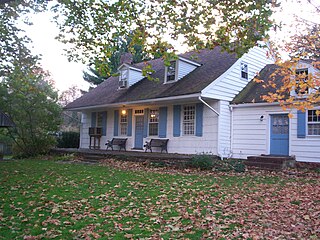
Franklin Township is a township in Somerset County, in the U.S. state of New Jersey. It is centrally located in the Raritan Valley region, within the New York Metropolitan Area. As of the 2020 United States census, the township's population was 68,364, an increase of 6,064 (+9.7%) from the 2010 census count of 62,300, which in turn reflected an increase of 11,397 (+22.4%) from the 50,903 counted in the 2000 census. The township was the state's 19th most-populous municipality in 2020, after being ranked 22nd in 2010.

John Bubenheim Bayard was a merchant, soldier, and statesman from Philadelphia, Pennsylvania. He achieved the rank of colonel while serving with the Continental Army, and was a delegate for Pennsylvania to the Congress of the Confederation in 1785 and 1786. Later he was elected as mayor of New Brunswick, New Jersey.

James Schureman was an American merchant and statesman from New Brunswick, New Jersey. He represented New Jersey in the Continental Congress as well as the United States House of Representatives and United States Senate.

The Hall–Mills murder case involved Edward Wheeler Hall, an Episcopal priest, and Eleanor Mills, a member of his choir with whom he was having an affair, both of whom were murdered on September 14, 1922, in Somerset, New Jersey, United States. Hall's wife and her brothers were accused of committing the murders, but were acquitted in a 1926 trial. In the history of journalism, the case is largely remembered for the vast extent of newspaper coverage it received nationwide; it has been regarded as an example of a media circus. It would take the Lindbergh kidnapping trial in the 1930s to eclipse the high profile of the Hall-Mills case.
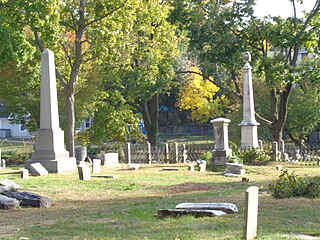
The Willow Grove Cemetery in New Brunswick, New Jersey is located behind the New Brunswick Free Public Library and the Henry Guest House. The cemetery runs along Morris Street, from Livingston Avenue to George Street. It is a contributing site of the Livingston Avenue Historic District.
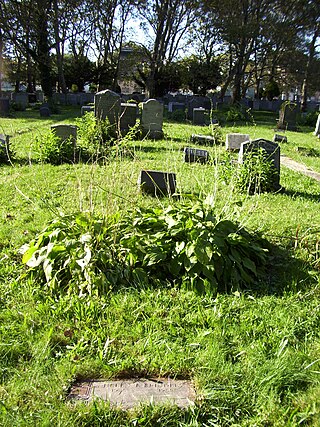
Bayview Cemetery, previously called Greenville Cemetery, is located in Jersey City, New Jersey. It merged with New York Bay Cemetery and is now known as Bayview – New York Bay Cemetery.

Elm Ridge Cemetery is on Route 27 in North Brunswick, New Jersey. It is a historic cemetery of both the Colonial period (18th-century) and the Victorian period (19th-century). Although located in Middlesex County, the majority of the burials are from Somerset County, which directly borders the cemetery.
New Jersey's 12th congressional district is represented by Democrat Bonnie Watson Coleman, who has served in Congress since 2015. The district is known for its research centers and educational institutions such as Princeton University, Rider University, The College of New Jersey, Institute for Advanced Study, Johnson & Johnson and Bristol-Myers Squibb. The district is primarily suburban in character, covering portions of Mercer, Somerset, Union, and Middlesex counties, although the district contains the state capital of Trenton as well as the smaller city of Plainfield.
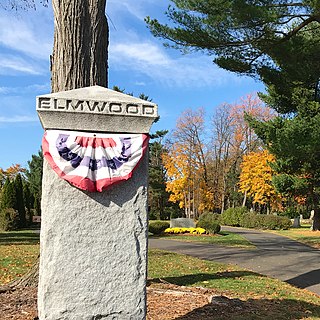
The Elmwood Cemetery is located at 425 Georges Road in North Brunswick, Middlesex County, New Jersey. It borders New Brunswick, New Jersey. The cemetery was established in 1868.

The First Presbyterian Church and Cemetery in New Brunswick, New Jersey is one of the oldest churches in the Presbyterian denomination. It was the seat of the Presbytery of New Brunswick which is now located in Trenton, New Jersey.

Garnett Bowditch Adrain was an American Democratic Party politician, who was a two-term member of the United States House of Representatives from New Jersey from 1857 to 1861.

Reuben Knecht Bachman was a Democratic member of the U.S. House of Representatives from Pennsylvania.

Augustus Albert Hardenbergh was an American Democratic Party politician who represented New Jersey's 7th congressional district in the United States House of Representatives from 1875 to 1879, and again from 1881 to 1883.
Littleton Kirkpatrick was an American Whig Party politician, who represented New Jersey's 4th congressional district in the United States House of Representatives for one term from 1853 to 1855.
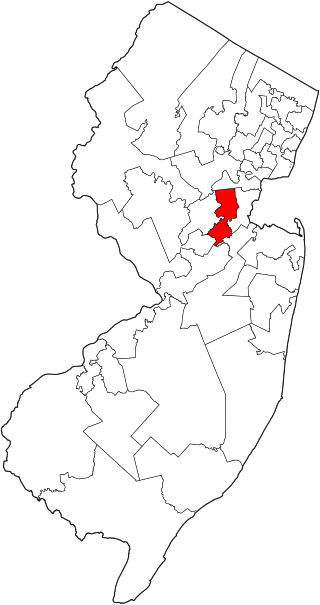
New Jersey's 18th legislative district is one of 40 in the New Jersey Legislature. The district includes the Middlesex County municipalities of East Brunswick Township, Edison Township, Milltown, Highland Park Borough, Metuchen Borough, South Plainfield Borough and South River Borough.

The Sophia Astley Kirkpatrick Memorial Chapel, known as Kirkpatrick Chapel, is the chapel to Rutgers, The State University of New Jersey and located on the university's main campus in New Brunswick, New Jersey in the United States. Kirkpatrick Chapel is among the university's oldest extant buildings, and one of six buildings located on a historic section of the university's College Avenue Campus in New Brunswick known as the Queens Campus. Built in 1872 when Rutgers was a small, private liberal arts college, the chapel was designed by architect Henry Janeway Hardenbergh at the beginning of his career. Hardenbergh, a native of New Brunswick, was the great-great-grandson of Rutgers' first president, the Rev. Jacob Rutsen Hardenbergh. It was the third of three projects that Hardenbergh designed for the college.
Joseph Edward Crabiel was an American Democratic Party politician who served in the New Jersey Legislature and as New Jersey Secretary of State until a scandal ended his political career. Known as "Steady Eddie," and later as "Concrete Eddie," he was briefly a candidate for the 1973 Democratic nomination for Governor of New Jersey.



















